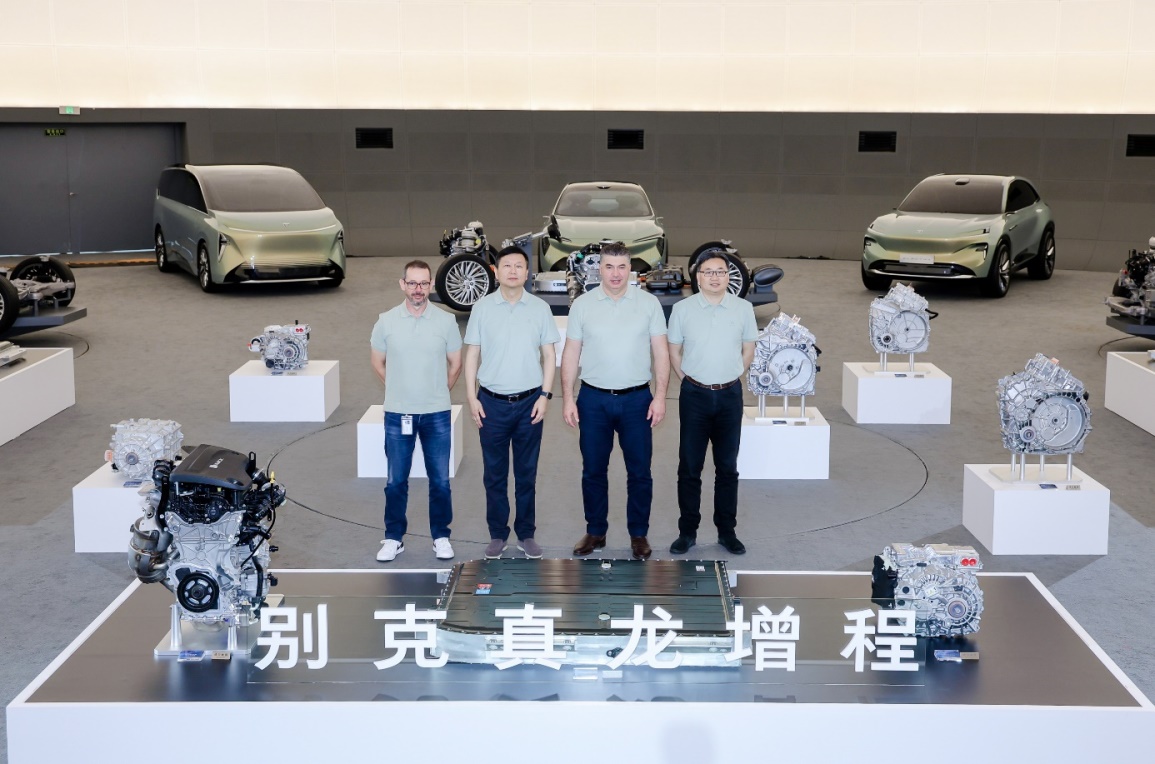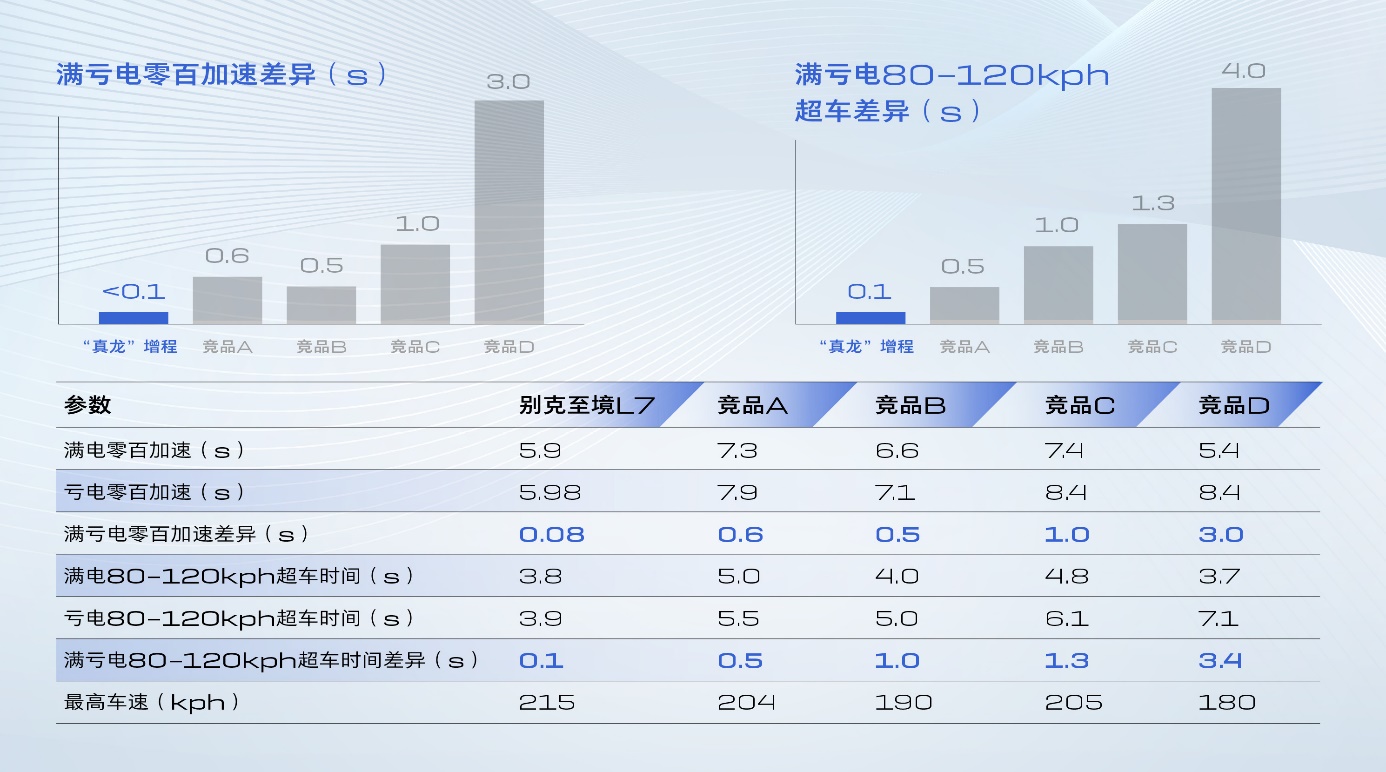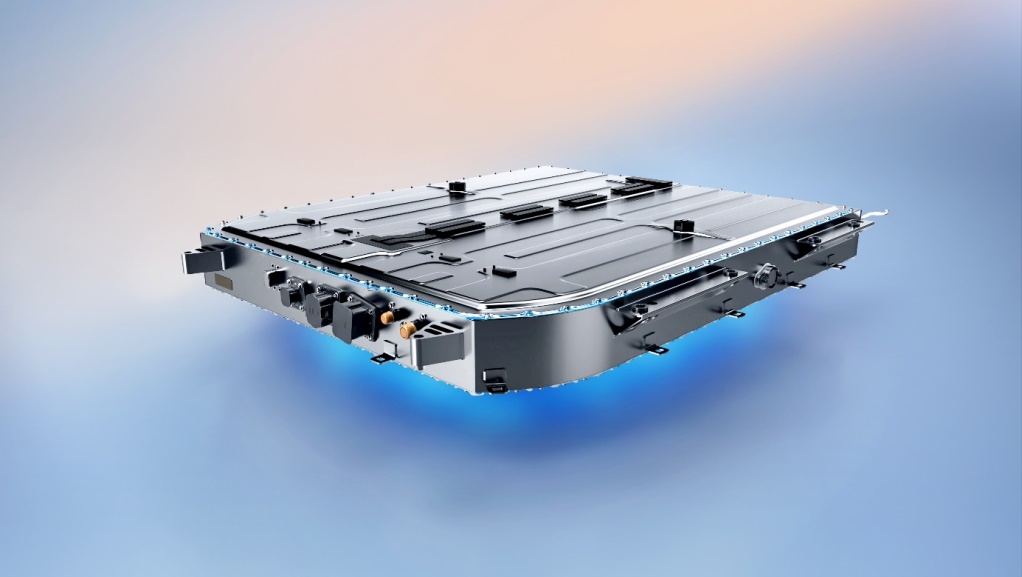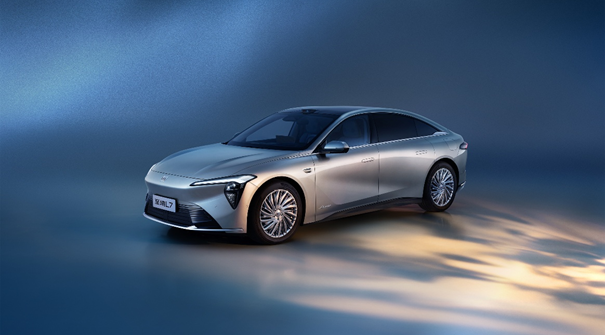Directly Addressing Four Major Pain Points, SAIC-GM Strikes Back in the "Range-Extended" Race
In recent years, with the intense competition in the pure electric market, many automakers, especially joint ventures, have begun to focus on the range-extended segment, which has seen a gradual increase in consumer acceptance. Recently, SAIC-GM officially launched its range-extended system, giving it a powerful name, "Zhenlong" (True Dragon). It is reported that the "Zhenlong" range-extended system will be first equipped on the upcoming Buick Envista L7.

Image source: SAIC-GM Buick
"In fact, as early as 2010, SAIC-GM launched the world's first mass-produced range-extended electric vehicle—the Volt, followed by the Cadillac ELR which also inherited this technology. However, at that time, market acceptance of this technology was relatively low, and now, we have finally awaited a new market opportunity," said Zeng Yu, Executive Vice President of SAIC-GM Automotive Pan Asia Technical Center.
However, he also pointed out: "Although the sales of range-extended products are currently good, application pain points are gradually emerging, such as short all-electric range and significant differences in driving experience between fully charged and depleted states. Fifteen years later, we are reintroducing range extension technology based on years of accumulated experience to directly address industry pain points, hoping to provide consumers with a more comfortable and satisfying driving experience."

Image source: SAIC-GM Buick
Zeng Yu provided a detailed analysis of how SAIC-GM addresses the pain points of range extender technology. Let's take a look.
Directly addressing Pain Point 1: Power attenuation in a low battery state
"One dragon with electricity, one worm with power supply" is an online humorous remark about extended-range vehicles, and it is indeed a fact.
In practical applications, a mid-to-large-sized range-extended vehicle can still deliver strong performance when the battery is sufficiently charged, even if it is equipped with a small 1.5T engine. However, once the battery is depleted, its power output drops significantly.The 0-100 km/h acceleration time generally increases by 0.5 to 3 seconds, and for some models, performance during high-speed overtaking drops almost precipitously, with a decline of nearly 50%.
This is because after power is fed, the vehicle can only rely on the range extender to produce kinetic energy, which is then transferred to the battery. The battery then distributes the generated electric energy to the motor, thereby driving the vehicle.
Buick brand, relying on nearly 30 years of electrification technology accumulation from General Motors, has adopted three major dedicated core technologies to solve this problem:

Image Source: SAIC-GM Buick
Ultium 2.0 Dedicated High-Performance Battery for Hybrid Systems To meet the diverse preferences of Chinese consumers for new energy forms,2025Since [year], the Buick Ultium platform has been upgraded from a pure electric platform to a multi-drive platform, supporting pure electric, extended-range, and plug-in hybrid modes.Ultium 2.0 Enhanced Hybrid Dedicated High-Performance BatterySupported in a fully charged stateUp to 315 kW / 9C rateDischarge capability, able to provide power even in a discharged state.260kW / 7.8C strong output
● 1.5THybrid-dedicated engineIt can deliver a rated power of 115 kW and a maximum torque of 230 Nm, matched with...Peak power 100 kW generatorBoth powerful and fuel-efficient;
● The industry's highest power range-extended single electric driveCan output252 kW of maximum power0 to 100 km/h acceleration takes only 5.9 seconds at full charge.
With the support of numerous advanced technologies, the "Zhenlong" hybrid achieves a difference of less than 0.1 seconds between fully charged and low battery conditions in both 0-100 km/h acceleration and high-speed overtaking—practically imperceptible—truly delivering seamless performance regardless of battery level.

Image source: SAIC-GM Buick
In addition, taking into account China's vast territory and diverse terrain, the "Zhenlong" range extension system was designed from the outset to fully address users' needs across all operating conditions and scenarios, introducing a system with as many as 31 patented technologies.COOLGRID Thermal Management TechnologyDesigned according to stringent working condition standards from component and system levels up to the whole vehicle level, it undergoes rigorous testing through prolonged, high-load challenges such as plateau climbing, high-speed driving, high-temperature environments, and extremely cold scenarios, ensuring continuous and powerful performance under all kinds of extreme conditions.The battery can still meet the cold start power demand at -40℃ under extreme low state of charge conditions (SOC ≈ 1%).

Image source: SAIC-GM Buick
Directly addressing the second pain point:Short electric range, slow charging.
Based on the big data analysis of the commuting behavior of millions of SAIC-GM users, the median total commuting distance for urban users per week is 280 kilometers, with over 90% of users commuting less than 300 kilometers in a single week. However, the range of previous extended-range models is around 200 kilometers, requiring users to recharge 2-3 times a week, which has become a major inconvenience for them.
The Buick Zhijing L7 equipped with the "True Dragon" range extender system achieved a pure electric range of 302 kilometers in tests, enabling users to commute within the city for a week on a single charge. Additionally, the system features a nearly 60L large fuel tank, providing a combined range of over 1400 kilometers to meet the needs of long-distance travel. Furthermore, through the vehicle's highly efficient energy consumption management system, it achieves a combined fuel consumption of 0.5L per 100 kilometers, making it both convenient and economical.

Image source: SAIC-GM Buick
In addition, to address the challenge of slow charging, the 40.2kWh dedicated Ultium battery adoptsThe fastest 130kW fast charging in its class.It takes only 18 minutes to charge from 30% to 80%.
It is also worth mentioning that this "True Dragon" range-extending system also possesses...3.6 kWh/L oil-to-electricity conversion rate Provides up to 252 degrees of power reserveEquivalent to the daily electricity consumption of an ordinary household for 30 days. Equipped with a 6kW V2L (Vehicle-to-Load) external power output function, this makes the Buick Envision L7 transform into a powerful mobile energy station, capable of simultaneously connecting various appliances such as electric ovens, coffee machines, and projectors, ensuring users have no worries about electricity supply during travel and camping.

Image source: SAIC-GM Buick
Pain Point Three: Frequent battery charging and discharging leads to rapid degradation and poses safety risks.
Safety has always been a key element for new energy vehicles. Since the Ultium 1.0 platform, Buick Ultium models have achieved over 1.5 billion kilometers of zero spontaneous combustion. The Ultium 2.0 multi-drive platform further elevates smart electric safety to new heights.
The Ultracapable 2.0 hybrid-specific battery features ultra-powerful dedicated cells, 360° multi-layer protection, multiple barrier heat dissipation capable of withstanding temperatures over 1000°C, and industry-leading waterproof and corrosion resistance levels, building a solid safety defense. It has undergone vehicle durability tests equivalent to over 4 million kilometers, covering all-weather and all-road conditions, meeting the "strictest ever" new national battery standards two years ahead of schedule (the battery has been validated far beyond the national standards, with 60% more test items and durability test criteria up to 29 times more stringent than the highest requirements of the new standards).

Image source: SAIC General Motors Buick
According to the thermal diffusion test conducted on a battery that maintains 100% charge at a temperature of 50°C, which far exceeds the national standard, there is no thermal propagation after the thermal runaway of a single cell. It remains stationary for 2 weeks without catching fire or exploding, far exceeding the new national battery standard requirement of "no fire or explosion within 2 hours."

Image source: SAIC-GM Buick
In addition, targeting the complex operating conditions of range-extended batteries, the Autoneng 2.0 battery life development aims to"Over 3,700 full charge and discharge cycles"The core objective:
● Customization of Electrochemical Systems:Optimize cell reaction kinetics through proprietary cathode material formulations and precise manufacturing processes to chemically delay cycle degradation.
Structural efficiency upgradeInnovative internal electrical connection design of the cell (connection between the tab and the terminal), doubling the conductive area, achieving a 10% reduction in internal resistance, reducing charge and discharge energy losses, and indirectly enhancing the stability of cycle life.

Ultratherm 2.0 Boost Hybrid Dedicated Battery (Image source: SAIC-GM Buick)
According to the introduction, the battery of the "Zhenlong" range extension system can achieve low degradation over a pure electric range of 640,000 kilometers. Based on an average annual mileage of 15,000 kilometers, vehicles equipped with this system, such as the Zhijing L7, can maintain low degradation in pure electric mode for up to 43 years.
Pain Point Four: Engine Intervention During Low Battery Causes Vibration and Cabin Noise
Whether it is the long-term operation of the engine during long-distance driving or the engine starting to charge in a low-power state, both can lead to vehicle vibration and interior noise, becoming the most common complaints of range extender vehicle owners.
The engine suddenly starts charging, with an abrupt operating sound accompanied by a slight vibration from the steering wheel, which is irritating.
● The dilemma of long-distance travel forces the engine to operate for extended periods. The sound of the engine is continuously amplified into a persistent roar.
● When the battery is low and you need to overtake or accelerate rapidly, the engine produces a loud noise in order to deliver enough power, accompanied by vibrations inside the car, which makes it particularly uncomfortable.
In response to this, the "Zhenlong" range extender has adopted multiple solutions to comprehensively optimize the system noise.

Image source: SAIC-GM Buick
● Three major upgrades of the range extender reduce noise from the source.
The engine uses an efficient combustion system, precisely controlling combustion excitation while taking fuel consumption into account.
Paired with an extended-range exclusive thickened cylinder block and a structurally reinforced intake manifold, along with a front cover equipped with damping and shock absorption, the overall noise is reduced by 1.6dB.
More importantly, the engine and generator use a coaxial direct-drive integrated design, allowing the two systems to work in perfect harmony. This results in smoother power transmission and reduces the vibration by over 25% during the start-stop of the range extender system, achieving seamless integration.
● Silentium Silent Drive Technology
The mainstream motors in the industry currently mostly use 48 slots. Specifically, the number of slots directly affects the uniformity of electromagnetic force: the more slots there are, the finer the magnetic field distribution is, resulting in weaker "electromagnetic noise" (such as high-frequency whistling) and vibrations during operation. The "True Dragon" range extender motor adopts a 72-slot motor, which requires higher electromagnetic design and manufacturing precision, balancing quietness, performance, and efficiency.
● Using dedicated acoustic accessories to provide the hybrid system with a "soundproof armor"
The Fit Silent composite acoustic package, specifically developed for electric drive systems, is a "golden combination of outer blocking and inner absorption"—a design that fits the sound source closely. It can both reduce the outward spread of noise and weaken the internal noise energy, lowering the high-frequency noise of electric drives by more than 5dB.
The mainstream range extender vehicles in the industry currently have engine intervention noise reaching 2dB, while the "Zhenlong" range extender system achieves engine intervention noise of less than 0.5dB, truly achieving consistent quietness whether the battery is full or depleted, perfectly solving the significant noise issue of traditional range extenders.

Image source: SAIC-GM Buick
Summary:
With the support of the "True Dragon" range-extended system, the soon-to-be-launched Buick Zhijing L7 new energy intelligent luxury sedan has achievedA class-leading pure electric range of 302 km, a segment-leading total range of over 1,400 km, the fastest 0-100 km/h acceleration in its class at 5.9 seconds, and a combined fuel consumption of just 0.5L per 100 km—with the advantages of ultra-long range, ultra-low fuel consumption, seamless performance in both fully charged and low-charge states, and no perceptible difference when running on low charge.Perfectly solve the current industry pain points of range extender technology.

Image source: SAIC-GM Buick
In recent years, SAIC-GM has accelerated its overall transformation pace, gradually shifting from an all-in pure electric approach in the new energy sector to a multi-path technology strategy. The "Zhenlong" range-extended technology, following the market recognition of the 2024 "Zhenlong" plug-in hybrid technology, marks another strong demonstration of the Buick brand's capabilities in diversified new energy driving solutions.
It is worth mentioning that in April this year, the Buick brand launched the "Xiaoyao Super Fusion Vehicle Architecture," which integrates the latest body, electronic and electrical architecture, drive system, chassis, intelligent cabin, and intelligent driving technologies, supporting more diversified product expansion capabilities.The "True Dragon" range extension technology is the culmination of this architecture.
【Copyright and Disclaimer】The above information is collected and organized by PlastMatch. The copyright belongs to the original author. This article is reprinted for the purpose of providing more information, and it does not imply that PlastMatch endorses the views expressed in the article or guarantees its accuracy. If there are any errors in the source attribution or if your legitimate rights have been infringed, please contact us, and we will promptly correct or remove the content. If other media, websites, or individuals use the aforementioned content, they must clearly indicate the original source and origin of the work and assume legal responsibility on their own.
Most Popular
-

EVA Morning Prices on September 12: Most of the Market Holds Steady, Highest Rise of 50 Yuan
-

[PET Weekly Outlook] Polyester Bottle Chips Expected to Oscillate and Warm Up with Costs Today
-

List Released! Mexico Announces 50% Tariff On 1,371 China Product Categories
-

Top Ten Personnel Changes in the Auto Industry: Insights into Industry Anxiety and Progress | Vision 2025
-

Case Study | Clariant AddWorks™ Additives Solve Plastic Yellowing Problem






